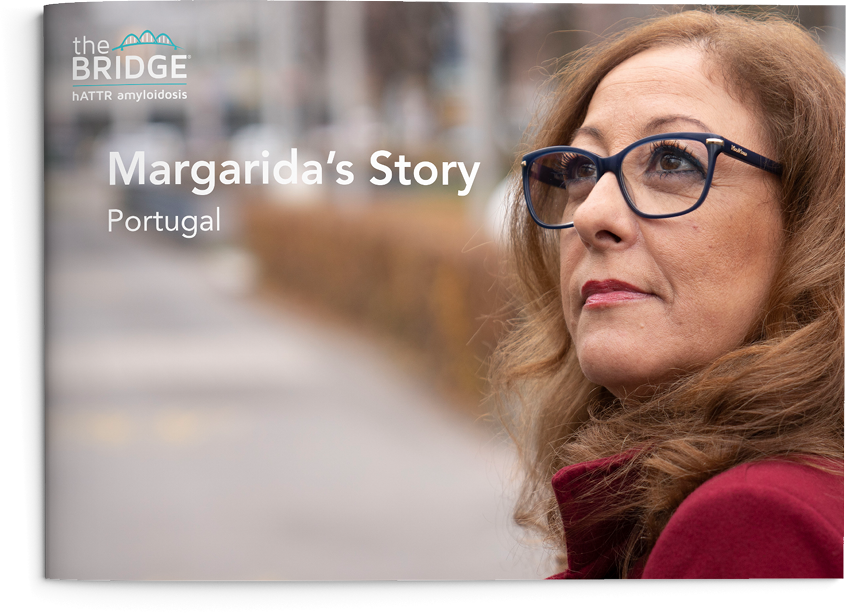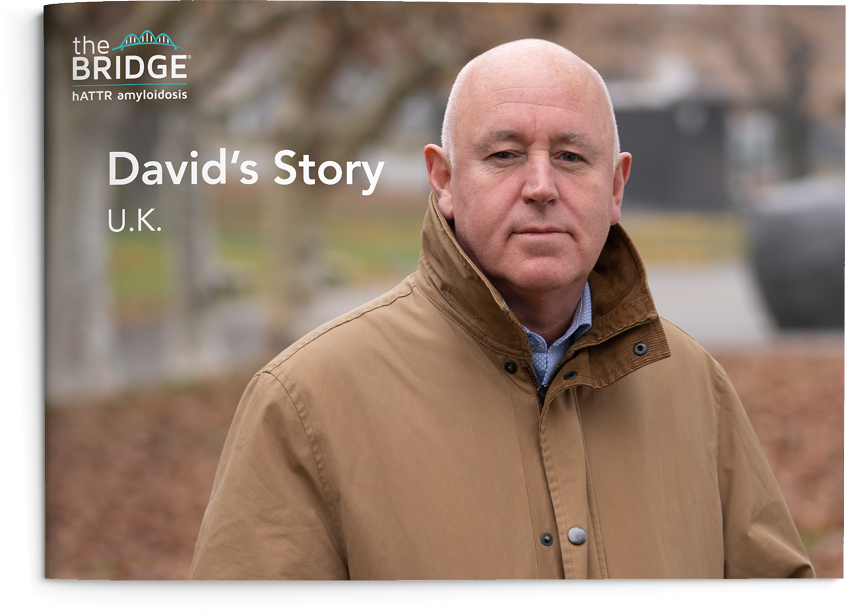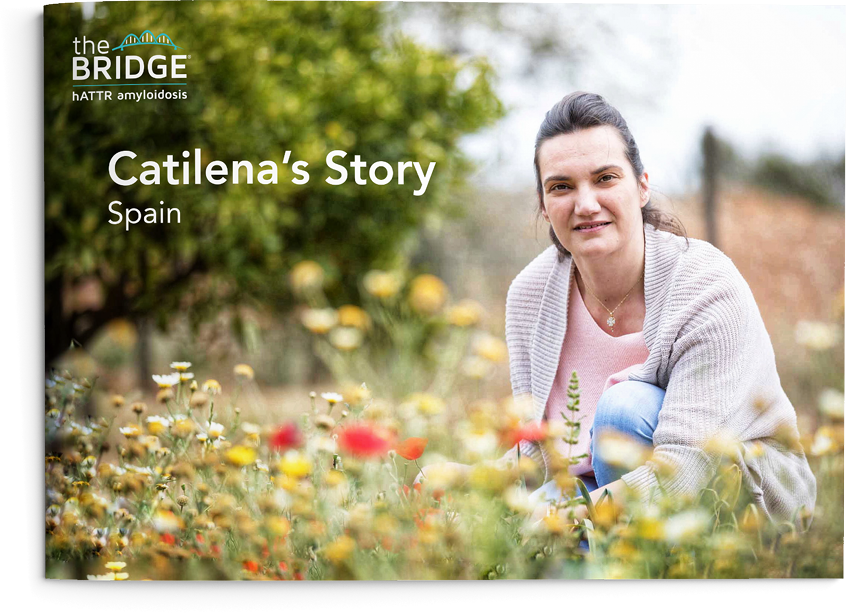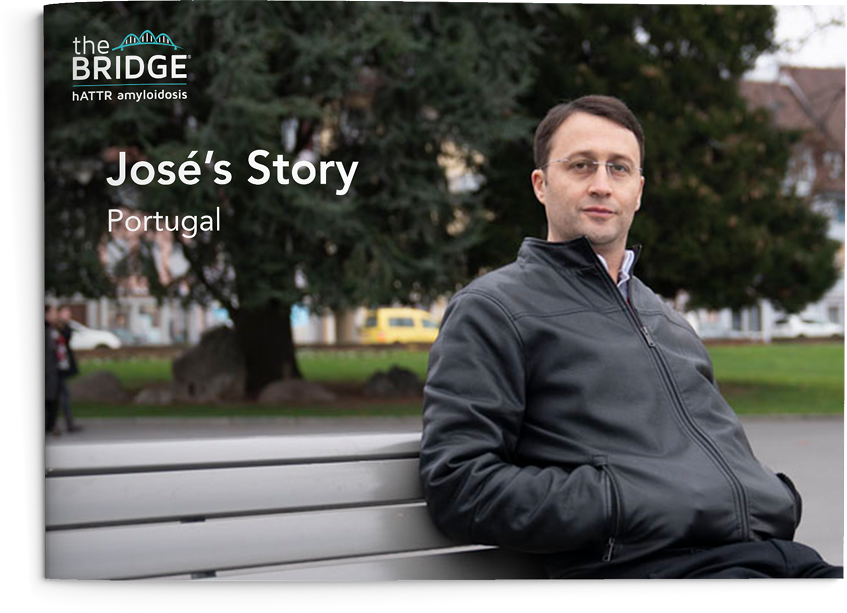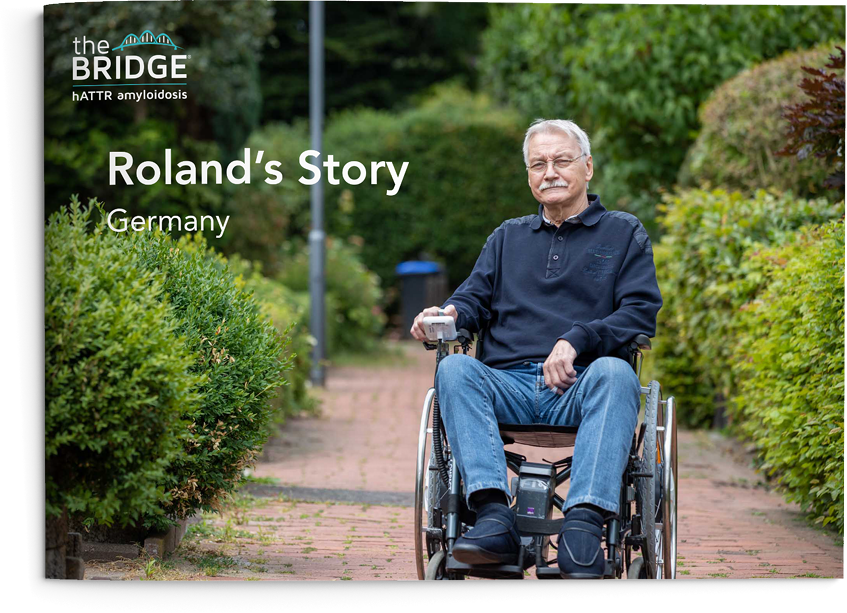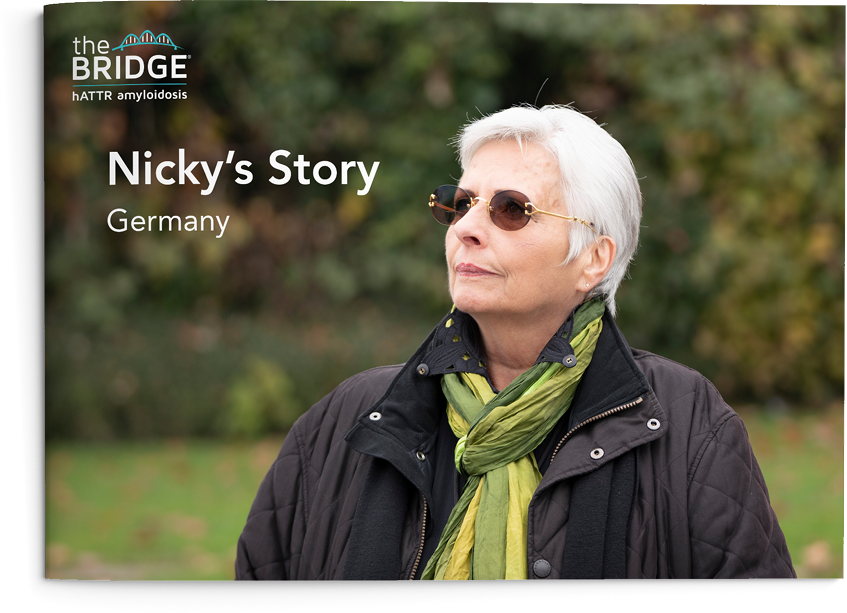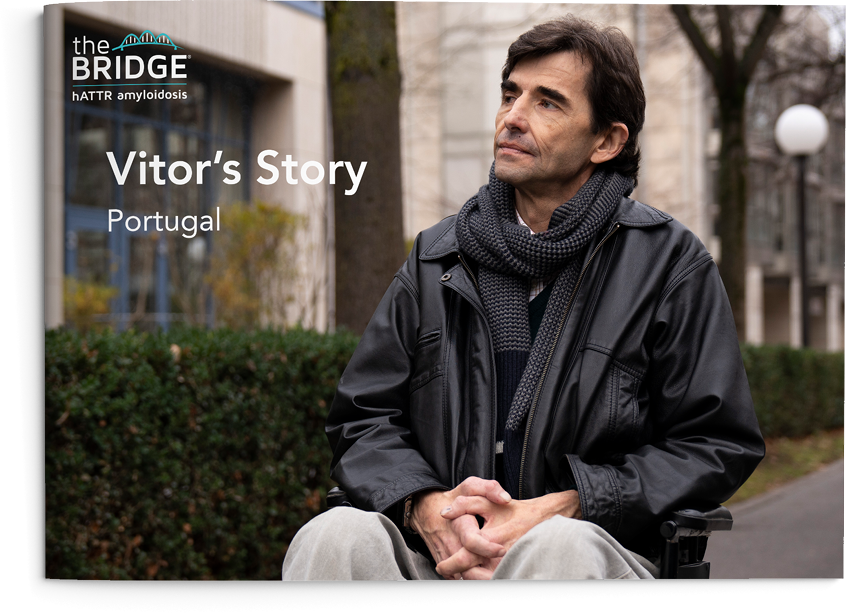Patient Stories
My name is Jean-Christophe. I’d like to thank Alnylam Pharmaceuticals for sponsoring and supporting me to share my story of living with hATTR amyloidosis. This disease is an inherited genetic mutation that creates amyloid deposits in the nerves of the peripheral system and affects many organs.
As I look back, I knew very little about my grandfather, Joachim. He was a child when he lost his mum and his father remarried with his aunt. He was unhappy with this marriage. That’s why, as soon as he was 14 years old, he decided to leave Portugal and sailed away to Algeria. He would never return to his native Portugal and would never speak Portuguese again.
Joachim grew up to be a strong man. He worked on building hydroelectric dams. He loved speed. When he wasn’t working, he loved to drive fast machines: a sports cabriolet or a motorbike.
One day he realized that he couldn’t feel electricity through his hands. He took that as a joke showing this ability to his coworkers. But something odd was evolving, too. He began to have numbness in his feet and legs. He was losing weight and the strength which he was so proud of. He passed away at 40, leaving behind his wife, Rosalie, and a ten-year-old son named Jacky, who would become my father.
Fast forwarding 25 years, I am now ten years old. I live with my dad, Jacky; mum, and my granny, Rosalie. I am happy, but I have a different life. I like going outside and playing with other children, but unlike them I never go walking in the forest or play football with my father because he doesn’t have the physical strength to move from his chair. He spends more and more time in his bed. He is too physically weak to move.
My mum worked at the factory to help pay the bills, and then she and my grandmother were taking care of my father. Ultimately, my father was misdiagnosed with another neuropathy: the Charcot-Marie-Tooth disease. He passed away when I was 11 years old. When I was diagnosed 23 years later, I finally understood my father must have had hATTR amyloidosis, too.
As for me, as if to please my father when I was a child, I continued to work at school and during all my studies. Then, I always tried to do my best, but without a father figure in my life, I always felt that I missed this important return. I did not know if I was doing well or not. I have always seen my father try to enjoy life as much as he could through music, good food, fine wines, sharing good times with friends and family. That’s why I also became an epicurean, trying to enjoy everything I could experience.
By the time I turned 32, I led a very active life. I was a professional engineer in physics and materials, and I was overseeing a team of 15 technicians and engineers. I liked to party with all my friends, and I was never the one who stopped first. When I was a child, I saw this spear gun in the garage, and it created a fantasy of submarine wonders in Algeria with my father. That’s why as soon as I got an opportunity, I learned how to scuba, and it became such a pleasure that I passed the degrees needed to be able to share the beauty of the submarine life with others. It was such a passion that I considered quitting my job and becoming a professional instructor.
I also ran half marathons, but although I trained every week with colleagues and a coach, I was not progressing as I should. It was even like I was regressing. My legs cramped. I had trouble following the pace. When I used a heart rate monitor for effective training, I couldn’t reach my target heart rate. My trainings exhausted me. It was harder to recover.
About the same time, I was gifted with a beautiful baby daughter named Paola. It was difficult to find the energy to face each day. Was it the lack of sleep because of the baby? No. Other things were changing, too. I started to feel numbness in my toes and pain in my legs, without working out. I took this is a signal that something was wrong. I consulted a neurologist; he performed an electromyogram and told me to wait.
Before my daughter turned three, my marriage was over, and my wife and daughter left me. I continued to dive and explore the marine world below, but I was feeling the cold like never before. I had troubles opening the faucets when I inflated the scuba tanks. I was more and more tired. I’d lost 15 kg. I stopped running; it was too difficult to keep up the pace I’d set before.
Realizing these issues were adding up to something, I went to see the neurologist several times. He performed a few electromyograms, and each test result was worse. During a week in hospital, I underwent various exams and a biopsy. I was worried and frustrated because I felt powerless in front of what was happening to me. When he told me I had neuropathy, I found myself thinking of my dad. He had neuropathy, too. Could it be passed from one generation to another? Why me? Why my family? Is there a curse?
I decided to change neurologists because I was angry after the three years lost since the first visit. The new one gave me four life-changing pieces of information, including my official hATTR amyloidosis diagnosis. The genetic test confirmed I had V30M hATTR amyloidosis, the Portuguese form, and he directed me to the only hospital in France where the neurologists focus on amyloidosis. He explained that a liver transplantation was the unique treatment for this type of amyloidosis and referred me the French hATTR patient association for more details.
So, I understood the origin of this disease. It could be traced back to my family’s birthplace. It was for me like reading the last chapter of a novel that brings the key to all the mysteries of the story. This news was capital; I had to share it. This is what I did with my friends, but it was more difficult with my mother because she had taken care of my father for nine years, and I did not want her to imagine reliving that with me. So I confided in my uncle.
I had decisions to make. I decided to get on a treatment, remain active, and fight. Once again, that was my plan, but obstacles would slow down my progress. While undergoing tests for my transplantation, the cardiologists implanted a pacemaker to control a blockage in my heart.
I remember very well when the cardiologist visited me in my room the evening before the pacemaker implantation. He looked at me, in the eyes, telling me that I’d never be able to dive again. Never dive again?! I was devastated. How could this happen? This was my passion!
It took me 15 years to get the official approval to begin diving again. My main motivation? To dive with my daughter, Paola. Thanks to that, we’ve dived together and travelled throughout the world to Costa Rica, the Red Sea, Indonesia and beyond.
When I was recorded on the waiting list for my new liver, I could not do it passively! I wasn’t going to wait for things to happen. In order to speed up the process, I wrote a letter to the director of the French transplant establishment, the prime minister, and the president of the republic. My uncle volunteered to be a donor, but in France donors must be a parent, child, or sibling. When I learned that the law was less strict in Belgium, I contacted a surgeon who was ready to graft a piece of liver from my uncle. Ultimately, I decided to wait for the transplantation to be done in Paris with an anonymous donor.
Even once I was scheduled, I could feel my body degrading: I had troubles walking. I was losing weight. I was so tired. Then the call came. It was 21:00, and I had to be in Paris in less than four hours. There were no flights. The train took too long. I was very disappointed when I told them I couldn’t arrive on time. Next time I would be prepared.
One week later, at 9:30 p.m., the hospital called again. I had four hours to get to Paris. I tried to charter a flight—too expensive! My best friend called the air force, but they refused. He was able to connect with an air mail service that offered me a seat in the cockpit. I’ll never forget the view as we flew over the center of Paris, and I saw the laser beam spinning at the top of the Eiffel Tower. It was as if it was celebrating my arrival.
After such a dramatic start, my transplant had some complications of its own. I struggled with some difficult side effects, including medication that made my bones very fragile in the months to come. I was not the type of person who was used to being fragile. I didn’t want to slow down. So I continued to push myself, even pursuing a lifelong passion to get my motorbike license, like my grandfather had so many years ago.
When you have amyloidosis, you tend to feel like you’re not quite human anymore. So much is taken away from you: your mobility, your dignity. It’s hard to keep a positive outlook on life or your situation but be positive you must! You must rally your support systems, prepare for battle, and work your strategy to survive every day.
Regarding my daughter, her discovery about the disease started quite bad. When she was only 10, her mother told her that she could potentially get this disease. So, I had to share with her positive information about that: It was only a probability. I explained amyloidosis in the best way I could. Initially, she was very sad. Over the years, as she got older, whenever she got sad, I’d sweep her into my arms, and I’d tell her to look at me: I was living a good life in spite of a chronic disease. I wanted her to have all the information she needed to understand what amyloidosis might mean to her future. I keep up with all the latest developments, and I share everything that I harvest with her.
I like to believe that if my grandfather and father could see me now, that they’d be proud of who I’ve become. I am on the top of my patient journey and am investing time to bring awareness to this condition at a local and international level.
Thank you.
